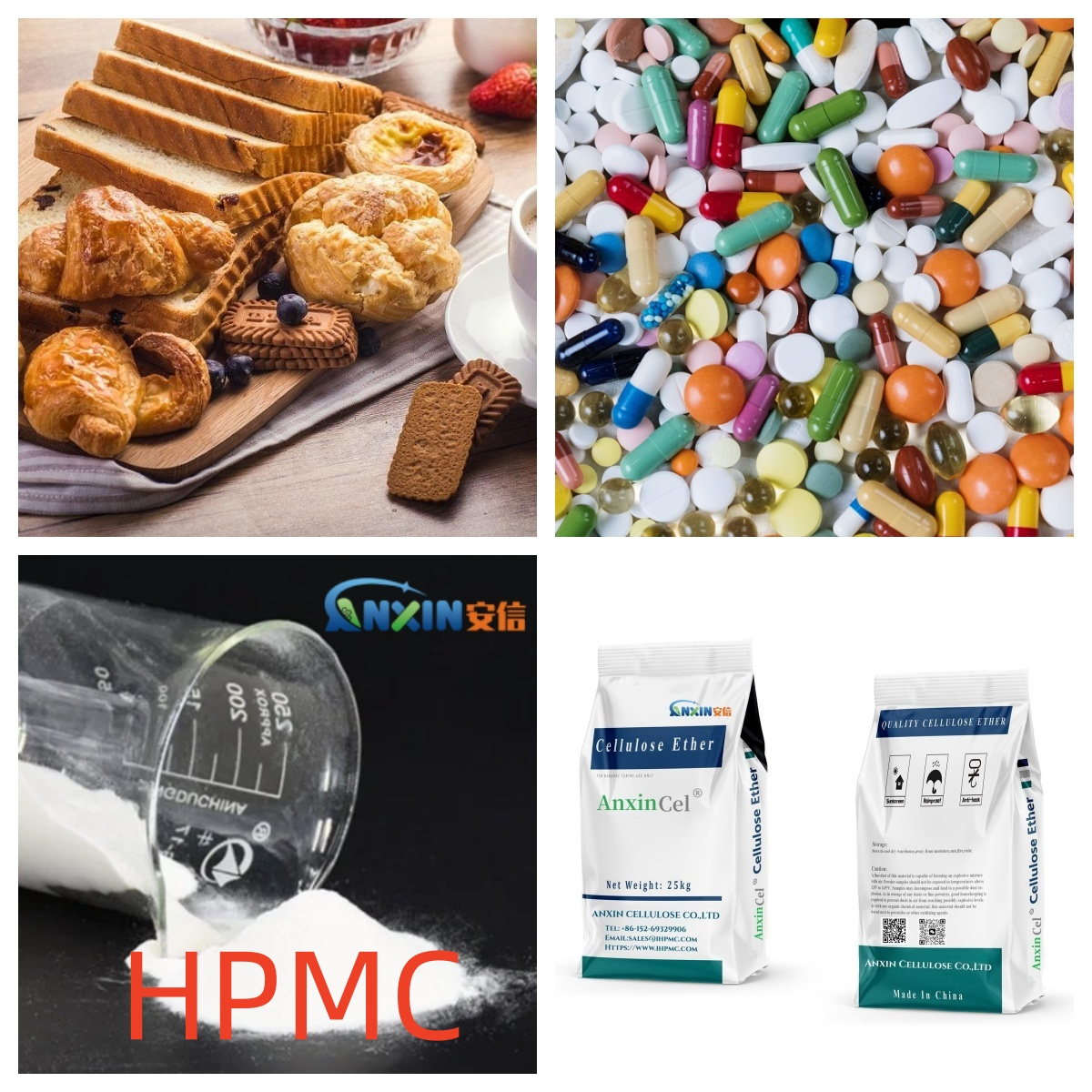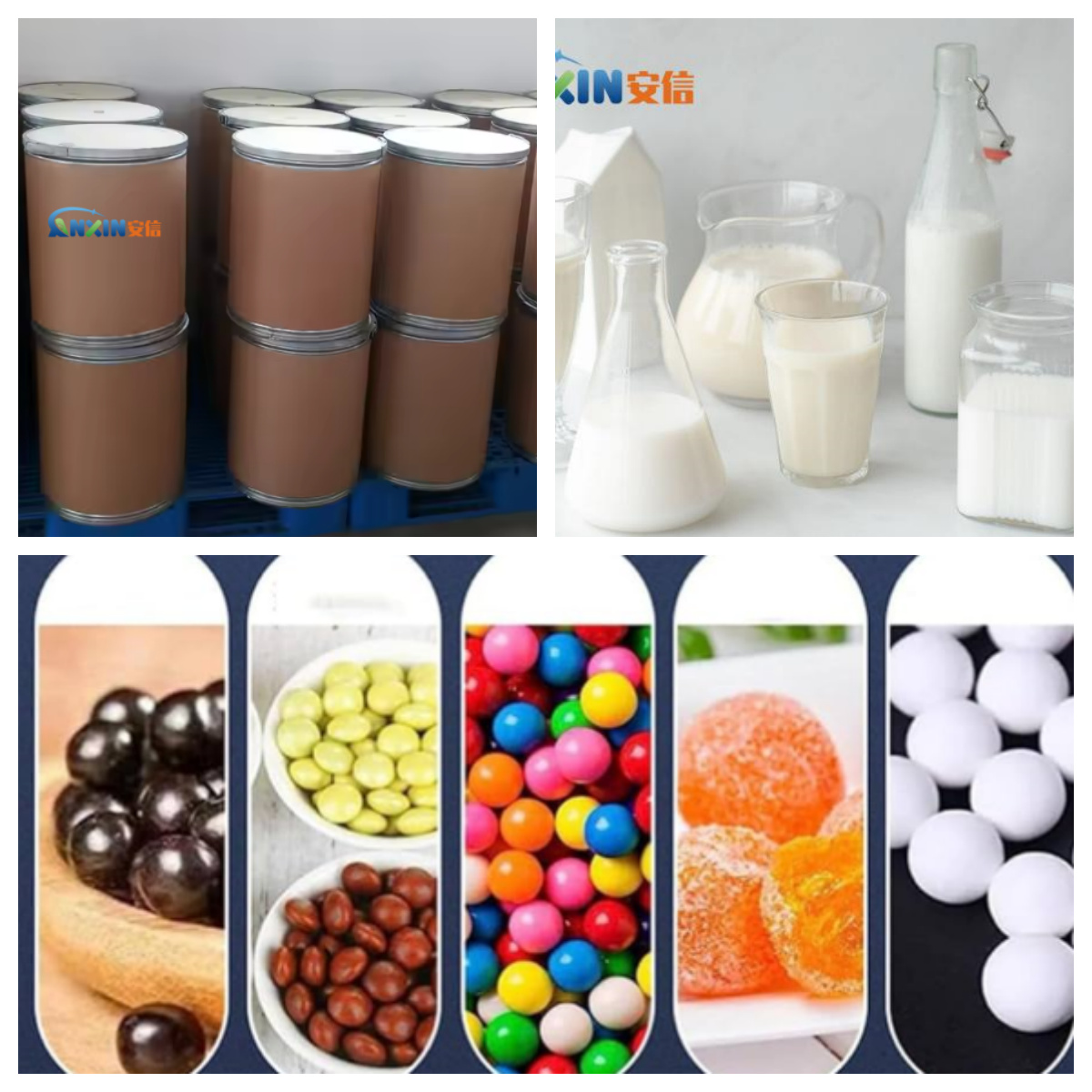Hydroxypropyl methylcellulose (HPMC) is a non-ionic cellulose ether made from natural plant cellulose through chemical modification. Due to its excellent physical and chemical properties, safety and good processing performance, it is widely used in the food industry as a thickener, emulsifier, stabilizer, suspending agent, film-forming agent and dietary fiber additive.
1. Common uses of HPMC in food
1.1. Thickeners and stabilizers
HPMC has good solubility in water and can form a high-viscosity solution. Therefore, it is used as a thickener in foods such as soups, sauces, dairy products, jams, puddings, etc. It can improve the taste of the product, improve the texture, and make the food more dense and smooth. At the same time, HPMC can also prevent liquid phase separation, so that the finished product remains uniform and stable during storage and transportation.
1.2. Emulsifiers and suspending agents
In some foods containing oil or suspended solid particles, such as salad dressings, cream drinks, and vegetable protein drinks, HPMC can be used as an emulsifier to help water and oil mix to form a stable emulsion, and as a suspending agent to prevent particle precipitation, making the product appearance more uniform and beautiful.
1.3. Film-forming agents and coating materials
HPMC has excellent film-forming properties and edibility, and can form a transparent, odorless film on the surface of food to prevent moisture, oil, and oxidation. For example, in candies, nuts, baked goods, or frozen foods, HPMC film can extend the shelf life and improve the appearance and taste.
1.4. Dietary fiber additives
HPMC, as a non-digestible polymer compound, cannot be absorbed by the human body. Therefore, it can be added to food as a soluble dietary fiber to help regulate intestinal health, delay glucose absorption, and help control blood sugar, which has positive significance for diabetics and people who want to lose weight.
1.5. Thermal gel properties are applied to low-fat foods
HPMC can form a gel when heated. This unique property is widely used in low-fat foods. It can simulate the greasy taste of fat in fat-free or low-fat formulas, improving the flavor and texture of the product. For example, in low-fat margarine, mayonnaise or ice cream, HPMC replaces part of the fat, so that the taste is not compromised while reducing calories.
2. Advantages of HPMC
2.1. High safety
HPMC is naturally derived and has been approved as a food additive by food safety regulatory agencies in many countries and regions, including the US FDA, the EU EFSA, and the National Health Commission of China. It is not digested and absorbed in the body, is non-toxic and harmless, and is a GRAS (Generally Recognized As Safe) substance.
2.2. Good thermal stability
HPMC has stable performance at high temperatures and is not easy to degrade. It is suitable for baking, quick freezing and heating ready-to-eat foods. The gel formed after heating can maintain the integrity of the food structure, and is especially suitable for microwave foods.
2.3. Low dosage and high effect
HPMC can show good viscosity, suspension and emulsification even at a low addition amount (0.1%-2.0%), effectively improving food quality.
2.4. Improved taste and texture
Its unique hydration characteristics and smooth and sticky taste can improve the texture of food, such as making baked goods softer, dough more extensible, and sauces smoother.
2.5. Extended shelf life of food
When used as a film-forming agent, HPMC can form a protective layer on the surface of food, blocking the invasion of oxygen, moisture and microorganisms, slowing down the rate of food spoilage and extending the shelf life.
3. Typical application types of HPMC
Baked food: improve the fluffiness and water holding capacity of bread and cakes, and delay aging;
Dairy products and plant milk: as emulsifiers and thickeners, stabilize the texture;
Frozen food: enhance structural stability and prevent freezing and dehydration;
Convenience food (such as instant noodles, soup bags): prevent oil-water stratification and improve solubility;
Low-fat/vegetarian food: simulate fat taste and improve flavor;
Candy and coating products: provide a bright surface, moisture-proof and crack-resistant.
The reason why HPMC is widely used in food is due to its excellent functional properties and good safety. It can not only thicken, emulsify, film-form and stabilize various foods, but also improve the appearance, taste and storage performance of foods, while meeting the needs of modern consumers for low-fat, healthy and high-quality foods. As a multifunctional and highly safe food additive, HPMC is playing an increasingly important role in the modern food industry.
Post time: Jul-08-2025

